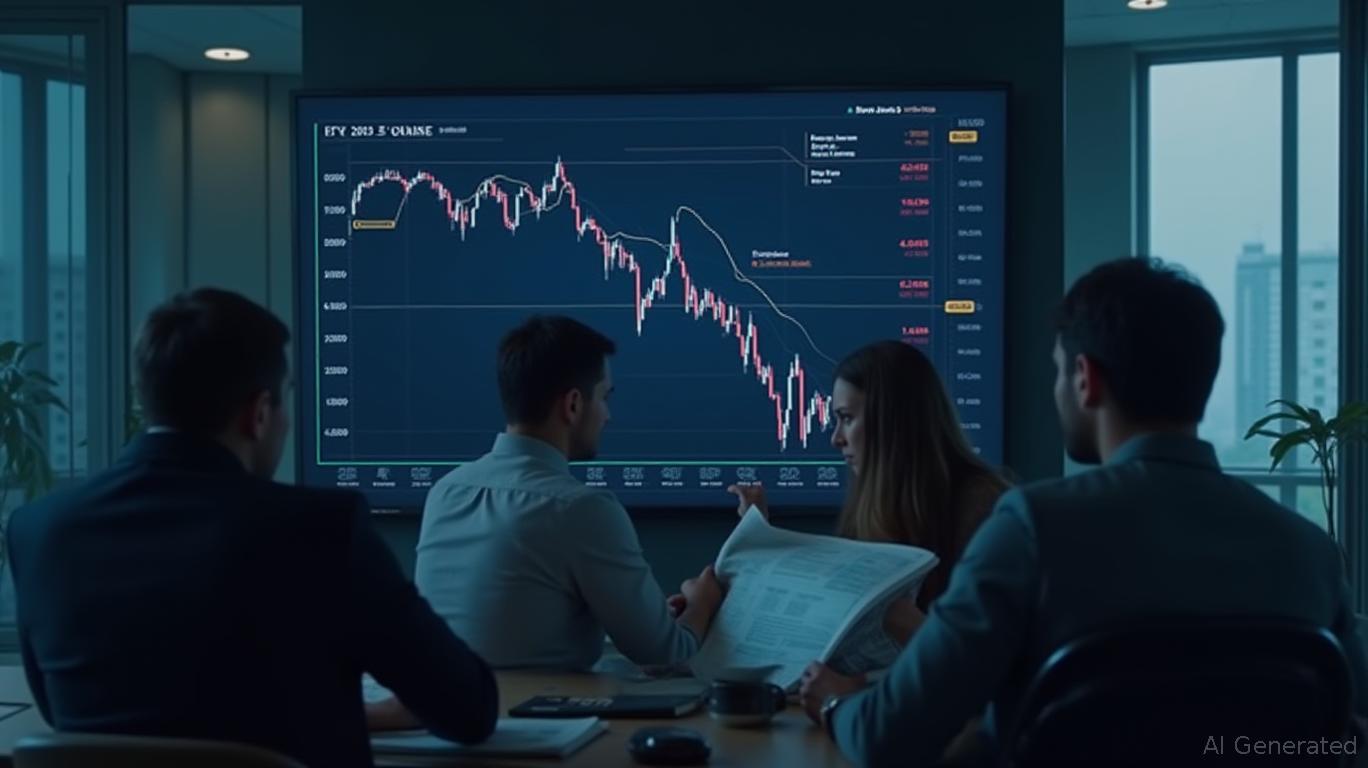Dow Jones Futures Volatility Amid Macro Uncertainty: Positioning for Near-Term Shifts
Investors navigating the choppy
of the U.S. equity markets in early June 2025 face a confluence of geopolitical risks, energy market turbulence, and Federal Reserve policy uncertainty. The Dow Jones Industrial Average's recent swings—often exceeding 700 points in a single session—highlight the fragility of sentiment as traders weigh recession fears against potential Fed easing. For those seeking to capitalize on or hedge against these shifts, futures markets offer a critical lens to decode investor expectations.Geopolitical Tensions Fuel Volatility: A Catalyst for Futures Market Whiplash
The Israel-Iran conflict has emerged as the dominant driver of recent volatility. On June 9, the Dow plunged 700+ points after reports of Iranian missile strikes on Israeli infrastructure sent oil prices soaring to $77.60 per barrel—a 7.6% weekly spike (WTI crude). Futures contracts for the Dow Jones Industrial Average dropped 0.3% that day, reflecting immediate de-risking by institutional investors. By contrast, defense stocks like Lockheed Martin and Northrop Grumman surged 3–4%, illustrating how futures traders parse sector-specific opportunities amid systemic instability.

The VIX volatility index, a gauge of investor fear, mirrored this tension. While the VIX closed at a 52-week low of 16.77 on June 6, it had spiked to 24.60 just five days earlier—a 48% intra-week swing. This divergence underscores traders' ability to rapidly recalibrate positions as geopolitical risks evolve.
Fed Policy: A Tightrope Between Inflation and Growth
The Federal Reserve's May 2025 FOMC minutes reveal a central bank straddling two priorities: anchoring inflation expectations and avoiding a growth slowdown. Despite PCE inflation easing to 2.3% (March 2025), the Fed's reluctance to signal rate cuts has kept markets on edge. Fed funds futures now price in a 97% probability of rates staying steady through year-end—a stark contrast to January 2025, when traders bet on 75 basis points of easing.
The disconnect between the Fed's cautious stance and market hopes for accommodation has created fertile ground for futures-based hedging. For instance, a trader bullish on a potential “Fed pivot” could use call options on the Dow futures to profit from a rebound, while pairing this with short-dated puts to limit downside risk. Conversely, those fearing a prolonged energy-driven inflation spike might sell overvalued tech stocks and hedge with inverse futures contracts.
Oil and the Dow: A Volatility Feedback Loop
Energy markets have amplified the Dow's volatility. A closure of the Strait of Hormuz—a scenario analysts now deem plausible—could push oil to $120 per barrel, triggering a global recession scare. Such a scenario would likely send the VIX back above 30 and the Dow into correction territory. Futures traders can preempt this by shorting energy ETFs (e.g., USO) while buying defensive sectors via futures contracts.
Meanwhile, gold's rise to $3,455/ounce (June 13) signals a rotation into safe havens, further pressuring equities. The inverse relationship between gold and the Dow's futures prices—evident in mid-June's trading—offers a tactical tool for hedging equity exposure.
Actionable Strategies for Near-Term Positioning
- Hedging with Futures Spreads: Construct a “collar” using at-the-money call options on the Dow futures paired with out-of-the-money put options. This limits upside gains but protects against abrupt declines.
- Sector Rotation via Futures: Sell tech-heavy futures contracts (e.g., Nasdaq 100) and buy energy or defense sector ETF futures if geopolitical risks persist.
- Volatility Arbitrage: Buy VIX call options when the index dips below 18 (as it did on June 6) and sell them if the VIX rises above 25, capitalizing on fear-driven swings.
Conclusion: Navigating the Crossroads of Risk and Reward
The Dow's volatility in early June 2025 is not merely noise—it's a market-wide debate over whether risks will materialize or fade. Futures markets, with their real-time pricing of expectations, offer traders a scalpel to dissect these dynamics. Whether positioning defensively or speculatively, the key lies in aligning trades with the probabilities of Fed policy shifts, energy market stability, and geopolitical de-escalation.
For now, the data suggests caution: the Fed's commitment to inflation targeting, coupled with fragile GDP growth, leaves little room for error. Investors would be wise to treat near-term futures rallies as opportunities to lock in profits or layer in hedges, rather than assume a sustained bull market.

Comments
No comments yet